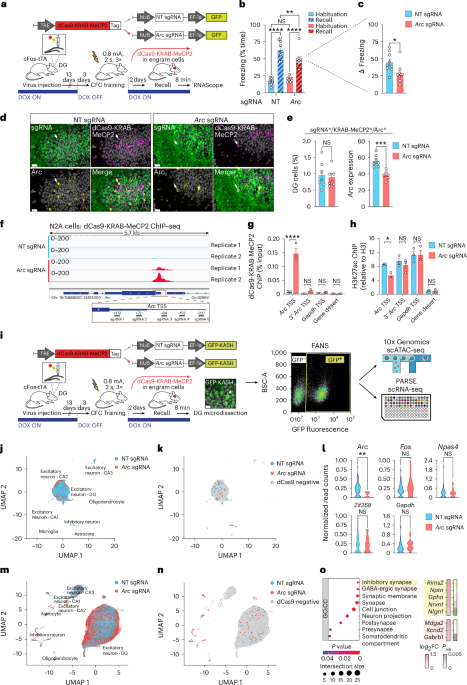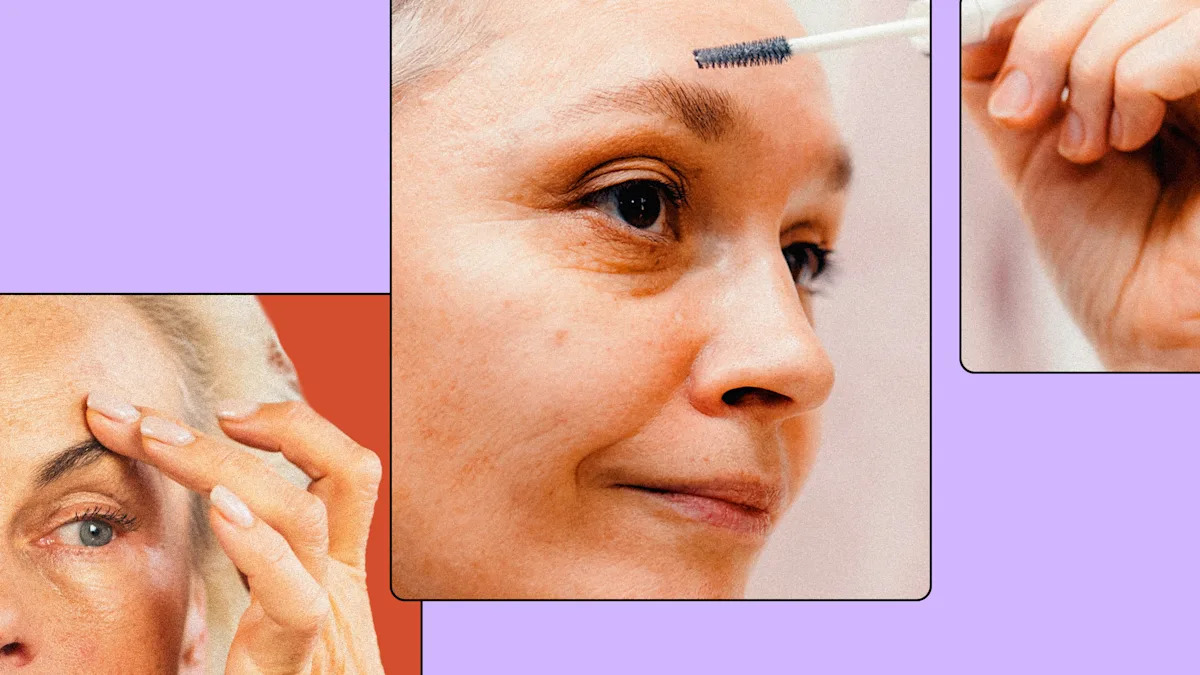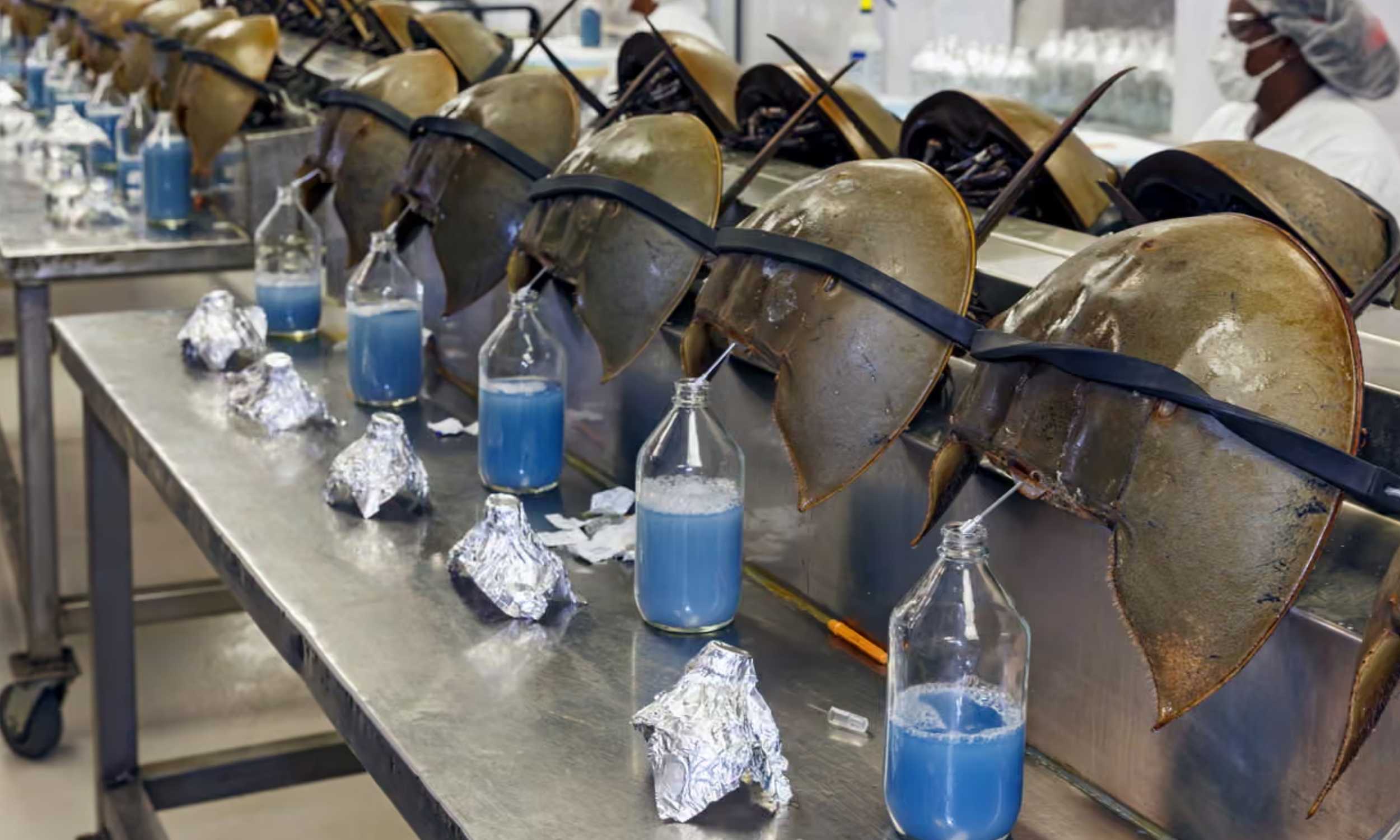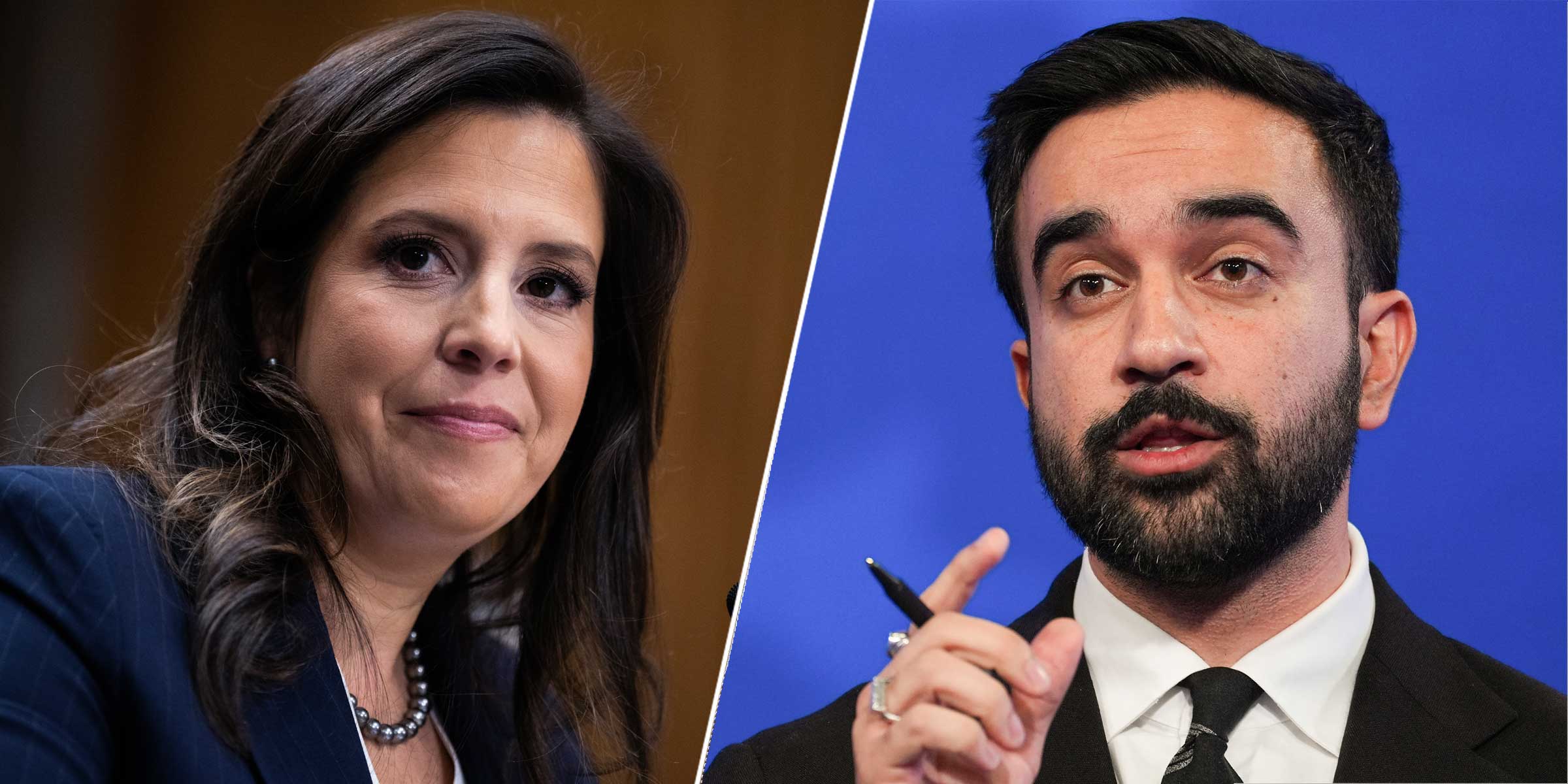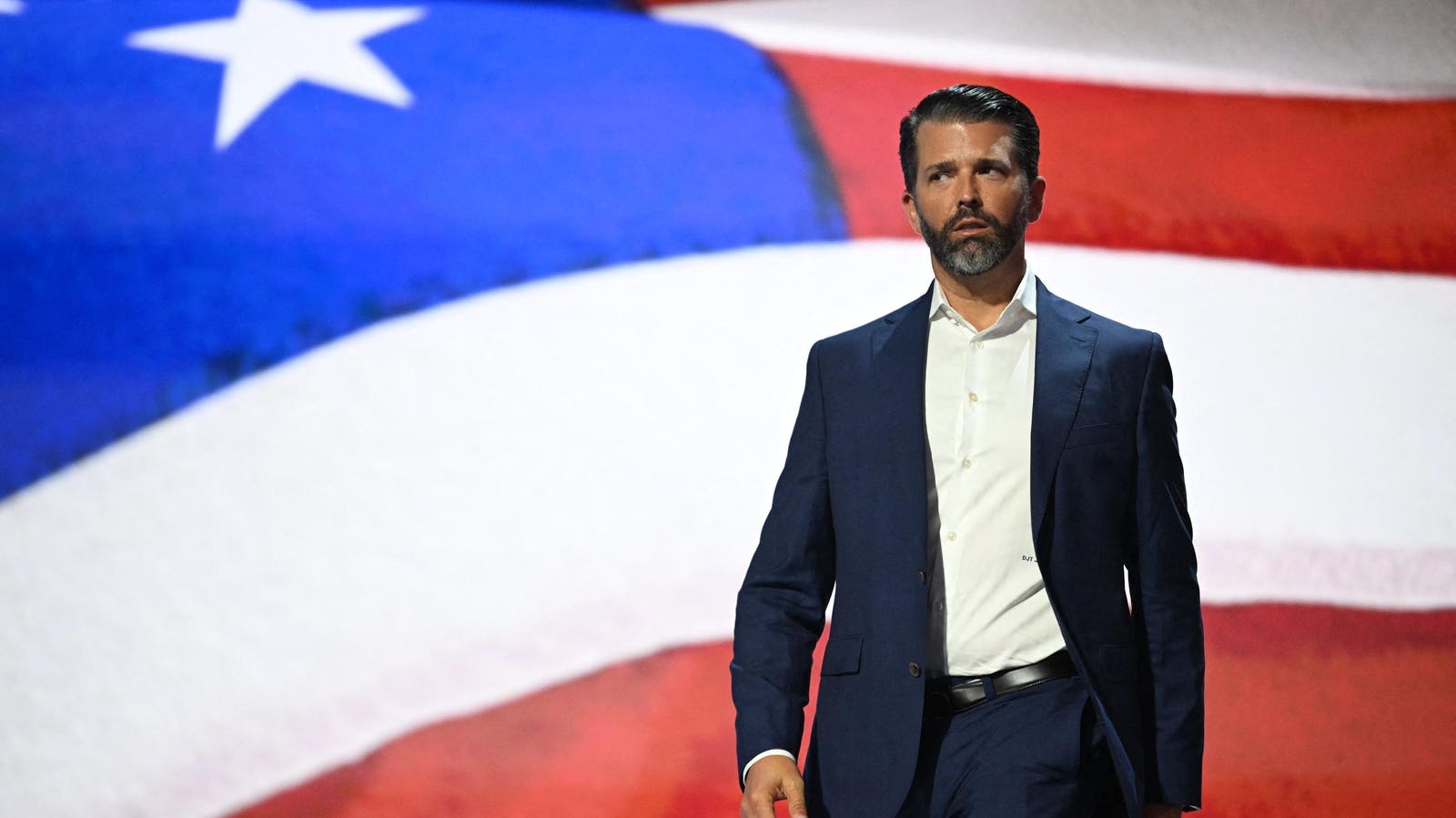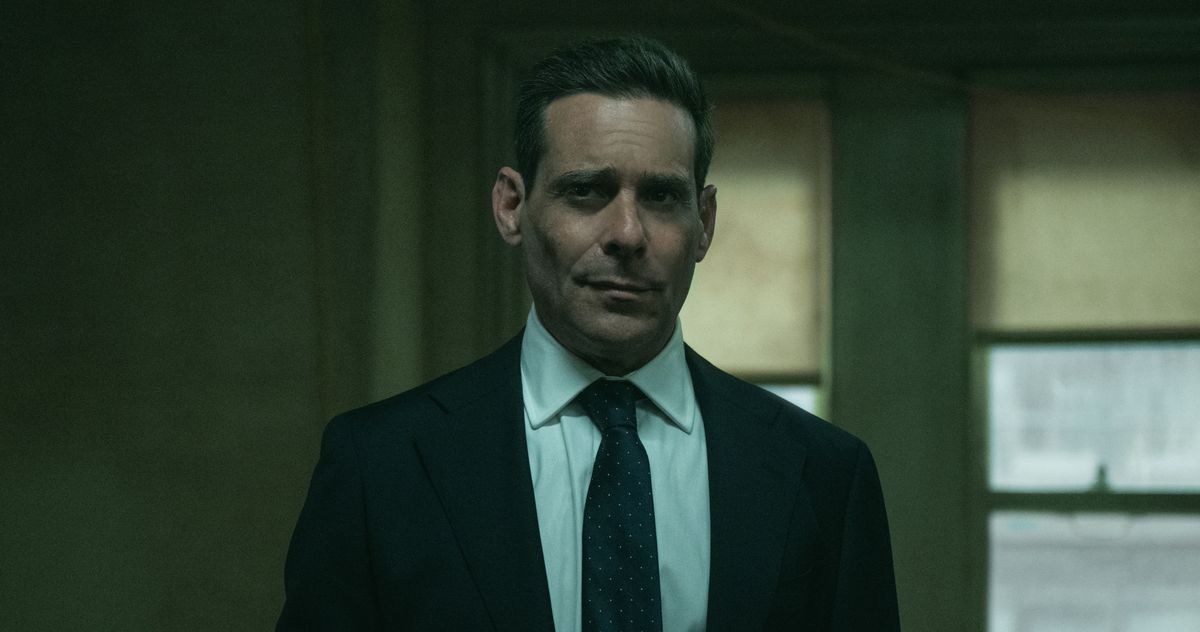With New York City’s mayoral election just one week away, new data offer a clear snapshot of voters’ mindsets as they begin heading to the ballot box. Findings indicate that Assemblyman Zohran Mamdani remains on track to win the mayoralty—drawing 46% to former Governor Andrew Cuomo’s 31% and Guardian Angels CEO Curtis Sliwa’s 21%, once the 8% of voters who remain undecided are taken out of the equation.
With a sizable and divided anti-Mamdani portion of the electorate, the socialist assemblyman appears to have enough support to secure the simple plurality needed for victory—even though his winning vote share may fail to clear a majority, something NYC has not seen since John Lindsay’s election to the office in 1969. Although this poll does take into account the higher turnouts among younger voters seen in the primary, a high turnout among young people could tip Mamdani over that majority threshold.
The poll also reveals a striking dissonance between Mamdani’s electoral strength and support for his progressive policy program. New Yorkers favor harsher penalties for fare evasion, are eager to repeal the state’s 2019 bail reform law, have hesitations about making buses free, and support meritocracy in public education.
Beyond the five boroughs, the poll also detects early tremors in statewide politics. In a hypothetical 2026 gubernatorial matchup, Republican Elise Stefanik leads Democratic Governor Kathy Hochul by one point (43–42) among registered voters, and posts a six-point advantage over her lieutenant governor and primary challenger, Antonio Delgado (43–37). While more than a year remains until Election Day, these findings underscore that New York’s next statewide race could be its most competitive in decades.
Full Results Available: Toplines, Crosstabs (NYC), Crosstabs (NY Statewide)
Methodology
Between October 22nd and 26th, 2025, the Manhattan Institute surveyed 600 likely voters for the 2025 NYC mayoral election and 300 registered voters across New York State. The sample was drawn from the national voter file, and the NYC likely voters sample was weighted to reflect the 2025 electorate—including changes observed in the mayoral primary and in early voting to date (e.g. higher youth turnout and higher Manhattan and Brooklyn turnout).
Both samples were separately weighted on gender, age, education, county, ethnicity, party registration, and party identification. The statewide sample is a combination of the 600 likely NYC voters and the 300 registered voters, re-weighted to account for population.
Responses were collected using a mixed-mode approach (SMS, live call to landline, live call to cell), in English, Spanish, and Mandarin. The margin of error is ±4% for the NYC sample, and ±3.3% for the full New York statewide sample.
Mayoral Election
Figure 1: In the November general election for New York City mayor, how will you vote? (NYC Sample)
Zohran Mamdani leads the field in the race for NYC mayor, winning support from 43% of likely voters, compared with 28% for Andrew Cuomo and 19% for Curtis Sliwa. Nearly one in ten voters (8%) remain undecided. When those uncertain voters are removed, Mamdani’s share rises to 46%, giving him a 15-point advantage over Cuomo and a 24-point advantage over Sliwa.
In hypothetical head-to-head matchups, Mamdani’s lead narrows but endures. Against Cuomo, he holds a 44–40% edge—maintaining a small advantage but leaving the former governor within striking distance. Against Sliwa, by contrast, Mamdani retains a 47–33% lead, reflecting both the city’s partisan lean and Sliwa’s limited appeal.
Figure 2: In the November general election for New York mayor, who will you vote for if these are the major candidates? (NYC Sample)
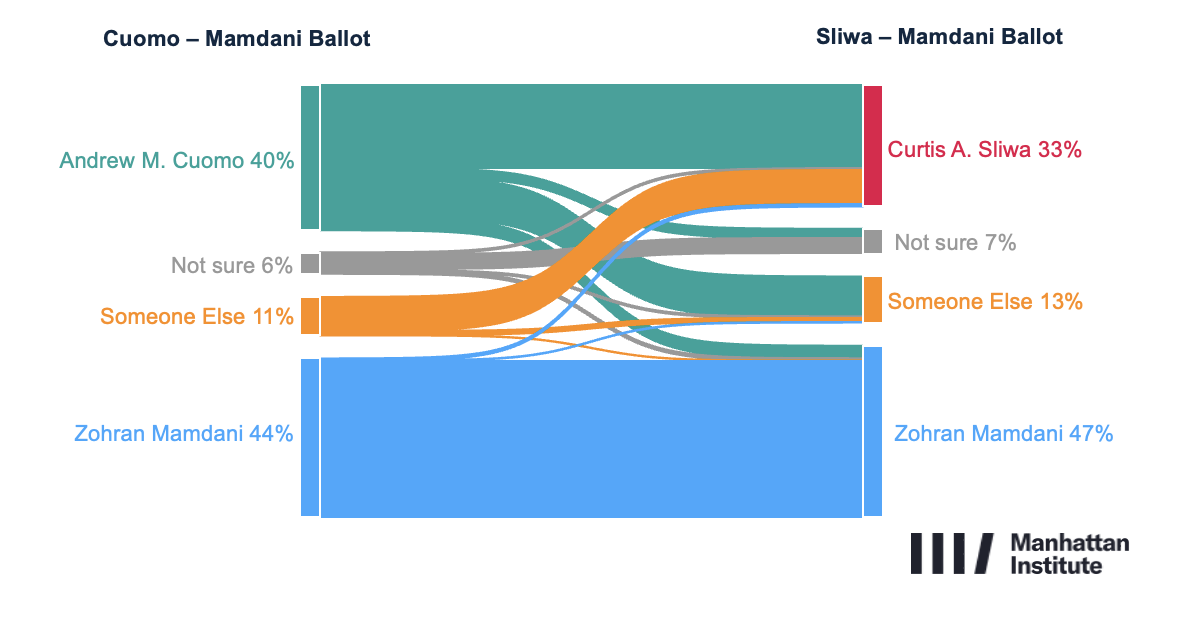
Voters appear highly loyal to their preferred candidates. Only 1% of NYC likely voters backed Mamdani over Cuomo, but Sliwa over Mamdani, and just 3% preferred Cuomo over Mamdani but Mamdani over Sliwa. Notably, only 55% of Cuomo voters—representing about 22% of all likely voters—say they would support Sliwa if the race were limited to Mamdani and Sliwa. This suggests limited crossover potential between Cuomo’s base and the Republican nominee, reinforcing Mamdani’s advantage in a fragmented field.
Ideological Identity
Democratic respondents in this survey were asked whether they identify as a “traditional liberal” or a “democratic socialist.” In NYC, more than half (53%) opted for the former, while 47% said socialist.
What is striking is the comparison with the Democrats in the rest of the state, who are typically more conservative. In the state outside NYC, 55% identified as a socialist while 45% identified as a traditional liberal. Has the Mamdani candidacy driven New Yorkers away from socialism rather than towards it? It would appear so.
On the Republican side, self-identified “traditional conservatives” outnumber “MAGA” Republicans in both NYC and the wider state. In NYC, 55% identify as the former, 45% as the latter. Statewide, it is 52% and 48% respectively.
Gubernatorial Election
Figure 3: In November 2026 there will be an election for New York state’s governor. If that election were held today, how would you vote if these were the major candidates? (NY Statewide Sample)
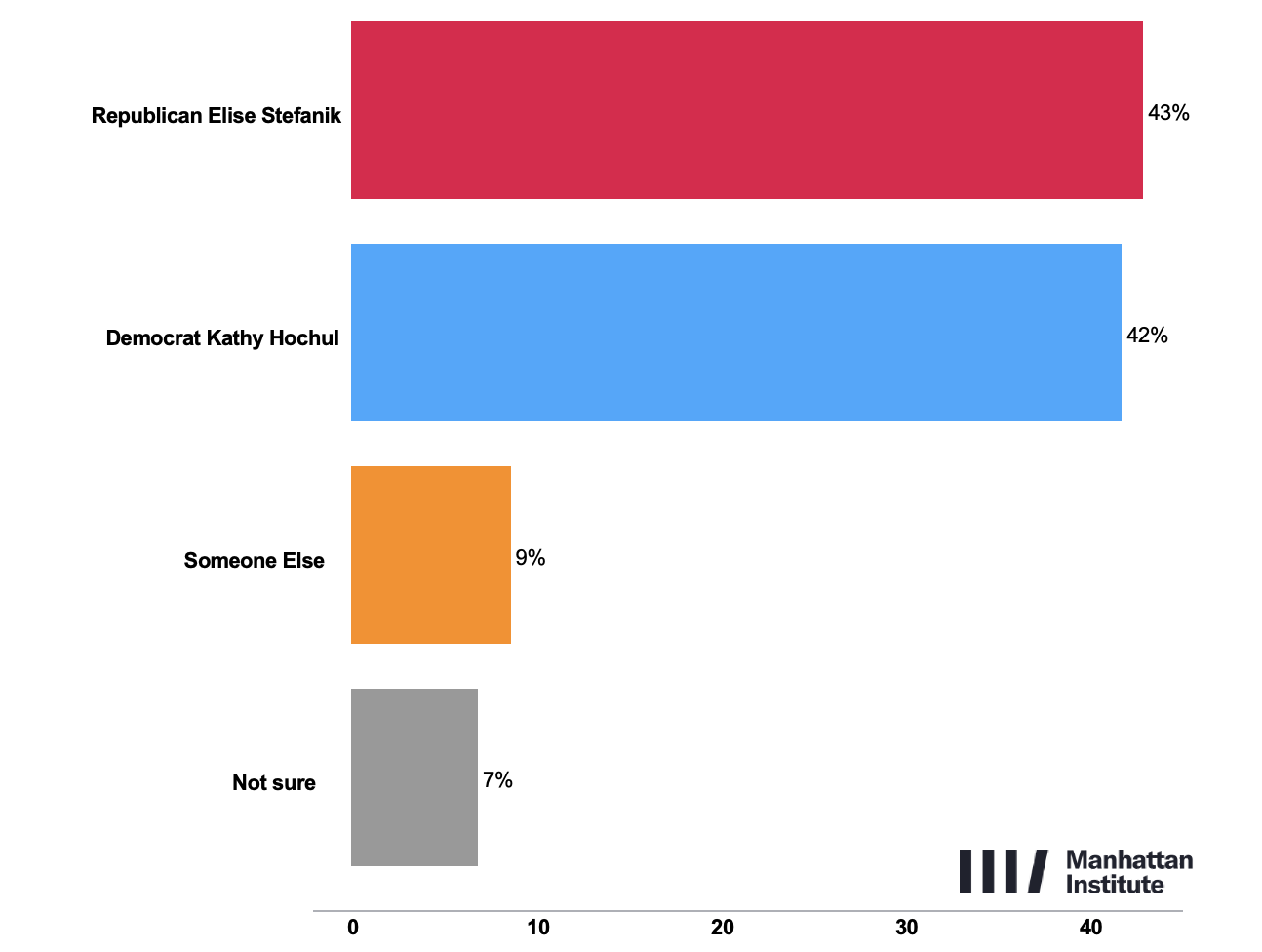
Looking ahead to 2026 and a potential matchup between Democratic incumbent Governor Kathy Hochul and Republican Congresswoman Elise Stefanik, 43% of voters statewide say they would back Stefanik, while 42% support Hochul—a statistical tie that nevertheless gives Stefanik a slight edge. When the Democratic candidate is switched to Hochul’s primary challenger and current Lieutenant Governor Antonio Delgado, Stefanik’s support remains steady at 43%, but support for the Democratic candidate drops to 37%, widening the Republican’s lead to six points.
Partisan loyalty remains strong across the electorate: most voters stay aligned with their party regardless of the Democratic nominee. Roughly 70% of Hochul supporters also back Delgado, while only 3% of Democrats cross over to Stefanik. The contrast between Hochul’s precarious standing and Mamdani’s near-assured victory underscores New York’s split political identity—a deep-blue city within a state that appears increasingly competitive.
Bail Reform
Figure 4: Do you support or oppose repealing bail reform laws and returning to the bail system before 2019? These laws allow individuals to be released until trial rather than being held. (NY Statewide Sample)
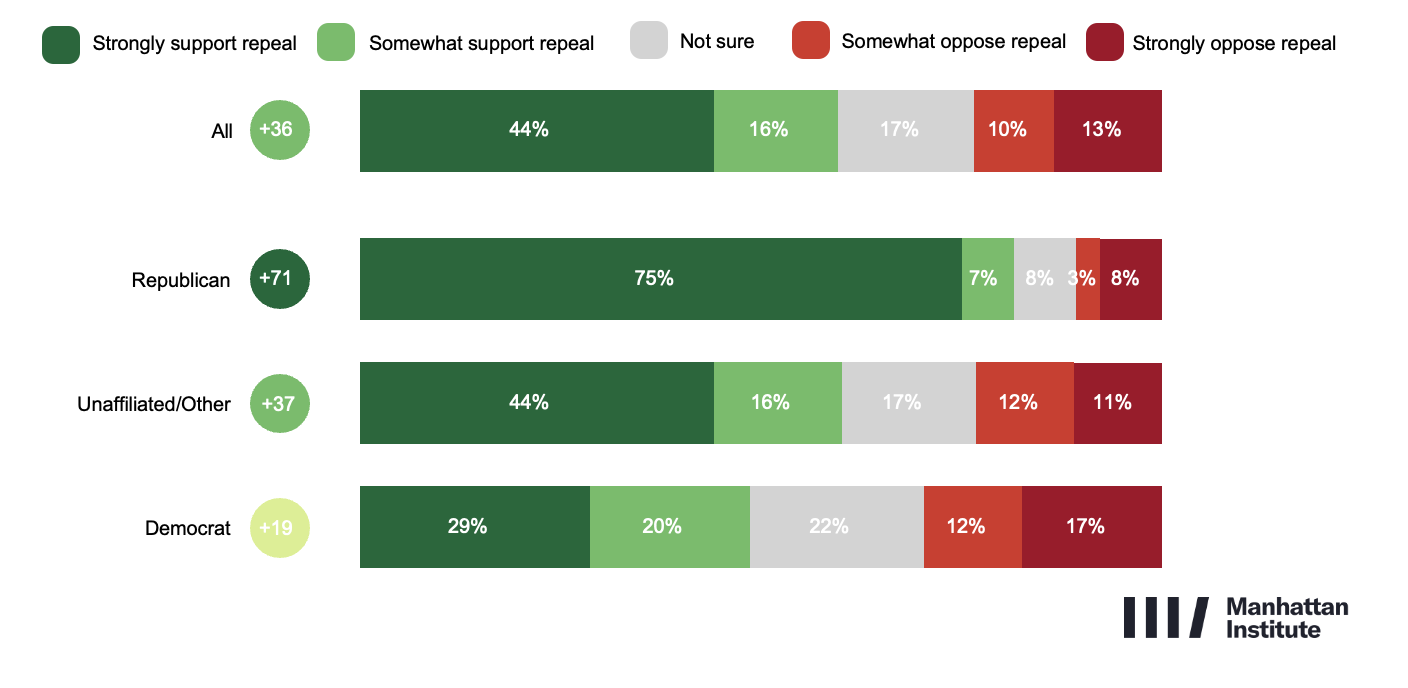
With bail reform a prominent issue in the current election cycle, respondents were asked if they supported or opposed repealing bail reform laws and returning to the bail system used before 2019. The current laws allow individuals to be released until trial rather than being held. Overall, a majority (60%) of registered voters in the state either strongly support or somewhat support returning to the pre-2019 laws. Fewer than one in four (23%) want to keep the current law.
In the city, 55% support repeal with 29% opposed. That compares to 56% and 32% respectively in the Manhattan Institute survey released in February; not a significant movement within the margin of error.
Fare Evasion
Figure 5: Which comes closer to your view of fare evasion, or turnstile jumping, on the subway? (NYC Sample)
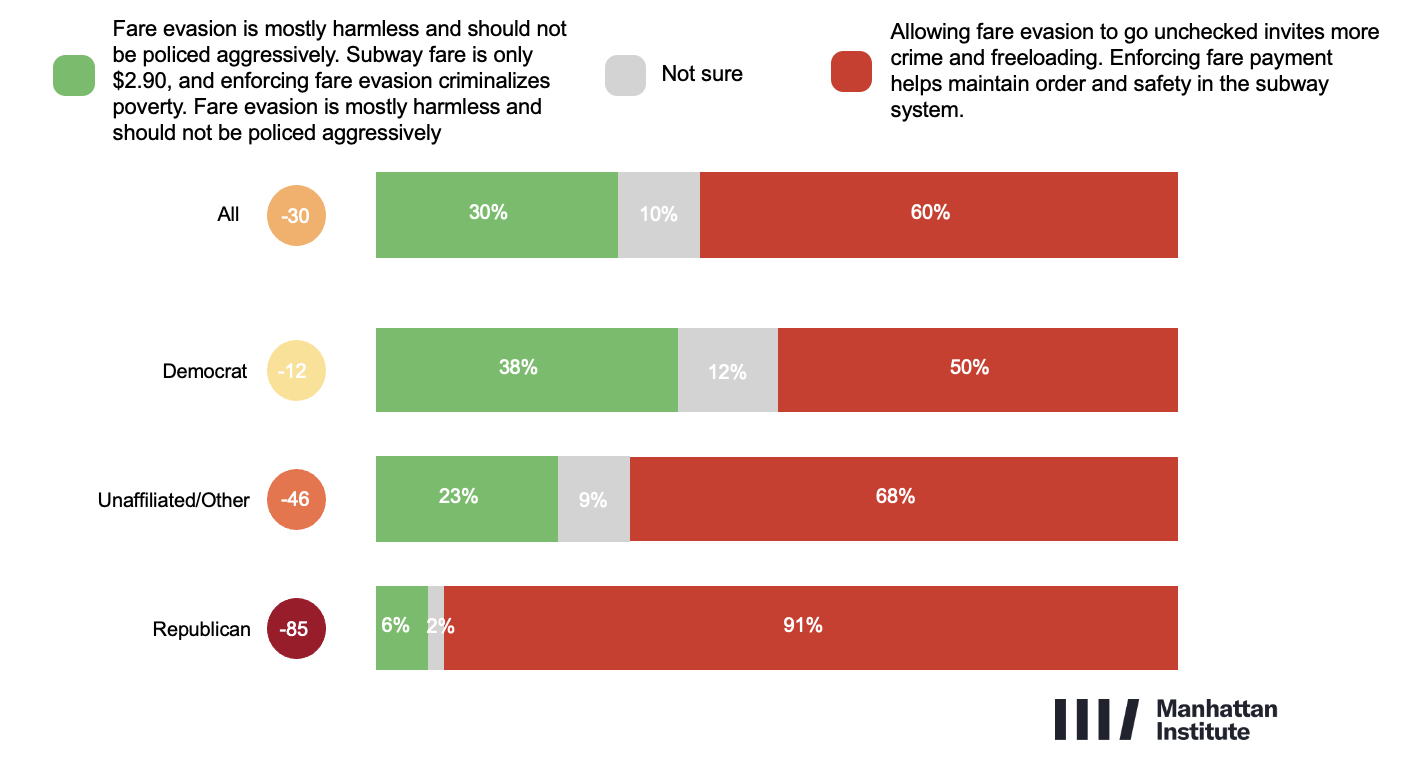
Fare evasion has also garnered considerable public attention. When asked which statement came closer to their own views, a majority of NYC respondents (60%) said that allowing fare evasion to go unchecked invites more crime and freeloading, while 30% said that fare evasion is mostly harmless and should not be policed aggressively. Since February, those numbers have hardened: in a Manhattan Institute survey released then, 37% said that fare evasion is mostly harmless while 57% said fare payment should be enforced.
In this poll, when split out by party, Republicans expressed the most uniform agreement (91%) that unchecked fare evasion invites more crime and freeloading. But majorities across all party affiliations share this view, including Democrats—by a margin of 50% (who agree) to 38% (who feel the action is mostly harmless).
Gifted and Talent Programs
Figure 6: Which comes closer to your view of gifted and talented programs in New York’s public schools? (NY Statewide Sample)
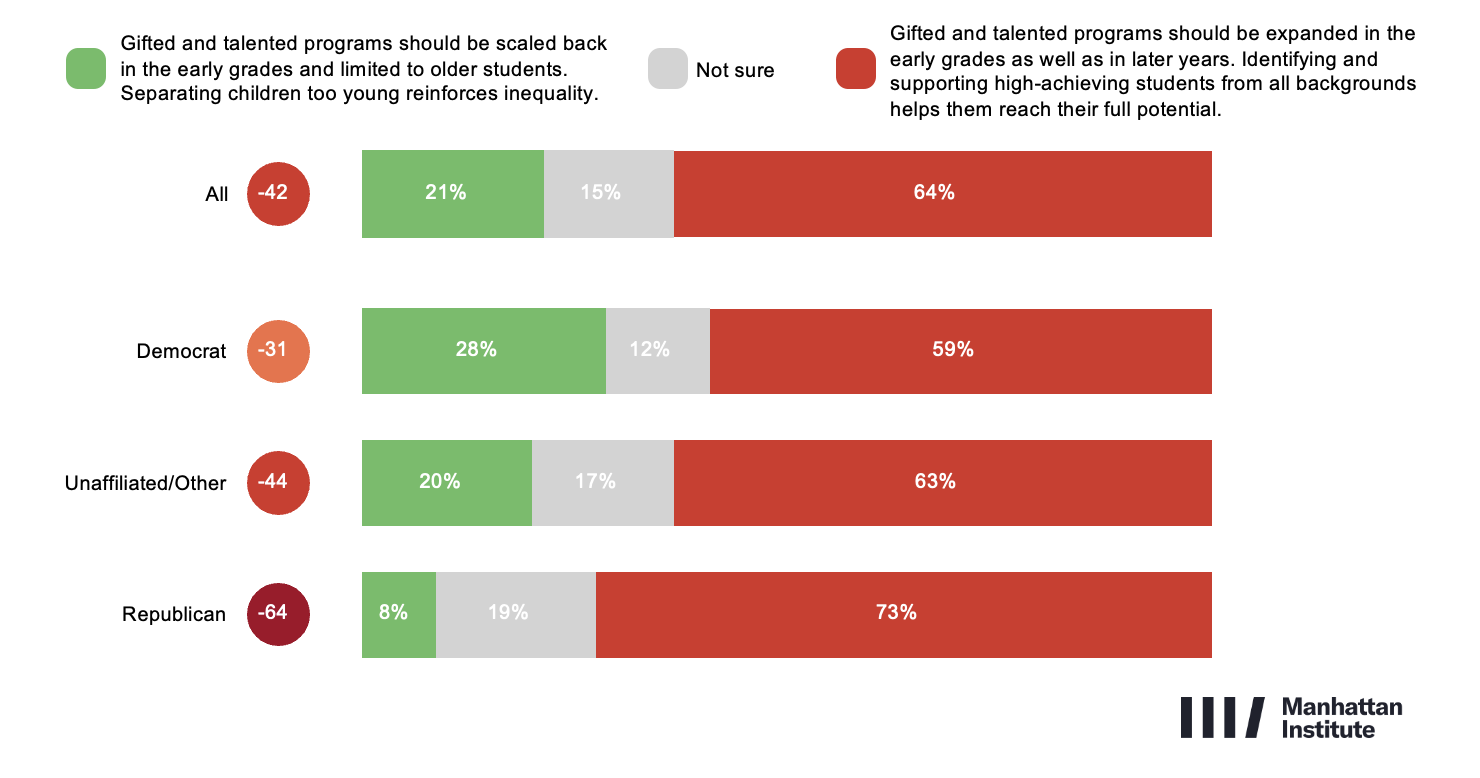
Support for expanding gifted and talented programs outweighed support for scaling them back across New York State. 64% of respondents felt that gifted and talented programs should be expanded in the early grades as well as in later years, because identifying and supporting high-achieving students from all backgrounds helps them to reach their full potential. In comparison, only one in five (21%) said such programs should be scaled back in the early grades and limited to older students to mitigate inequality among younger children.
Free Buses
Figure 7: Which comes closer to your view of making all New York City buses fare-free? (NYC Sample)
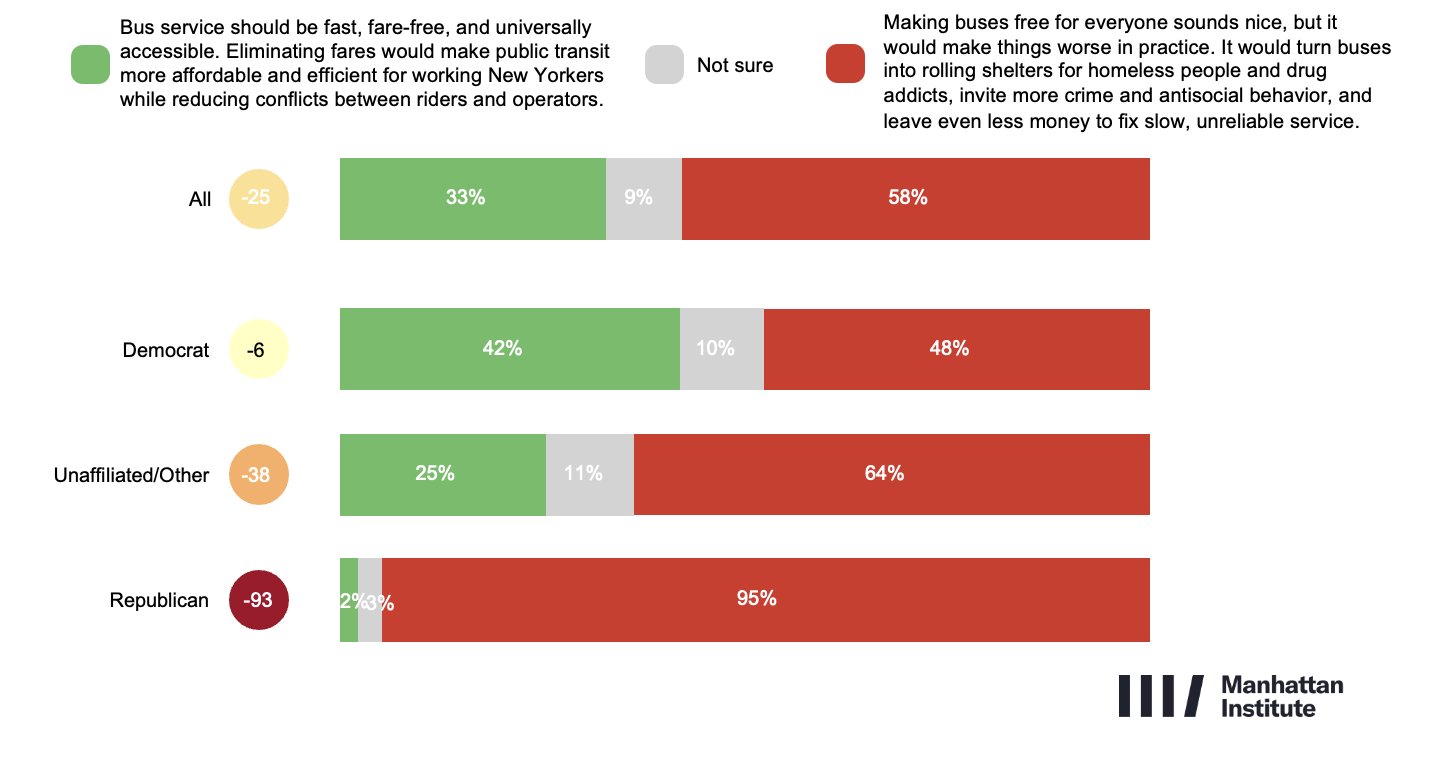
Regarding Mamdani’s proposal to eliminate bus fares, a majority of NYC voters (58%) oppose the idea, agreeing that while making buses free may sound appealing, it would likely make service worse in practice—turning buses into mobile shelters and straining an already unreliable system. In contrast, one-third of voters (33%) support free bus rides, arguing that eliminating fares would make transit more affordable and efficient for working New Yorkers while reducing conflicts between riders and operators.
Partisan divides are clear but not extreme: 42% of Democrats support fare-free buses, while 48% oppose. Across party lines, skepticism remains the prevailing view.
Corporate Tax
New Yorkers were more divided on raising the corporate tax rate than on any other issue. Four in ten (39%) New Yorkers oppose raising the corporate tax rate on businesses statewide to pay for new social programs in New York City, while 53% support a corporate tax hike. Across the state, the picture is different: 50% oppose the measure while 41% support it.
Photos: Tom Williams/CQ-Roll Call, Inc via Getty Images (left) / Angelina Katsanis-Pool/Getty Images (right)
Are you interested in supporting the Manhattan Institute’s public-interest research and journalism? As a 501(c)(3) nonprofit, donations in support of MI and its scholars’ work are fully tax-deductible as provided by law (EIN #13-2912529).
First Appeared on
Source link





